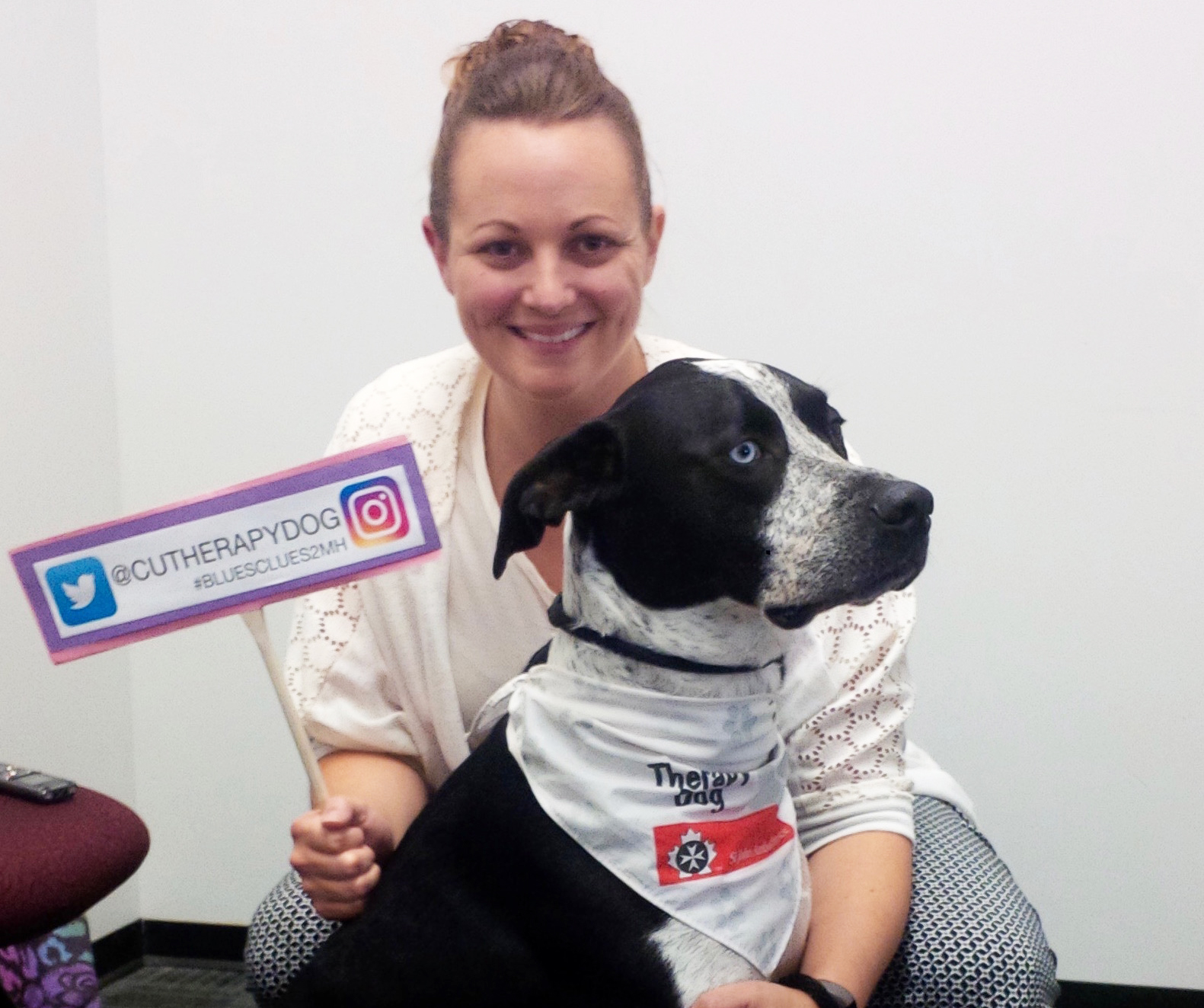Carleton’s Housing and Residence Life Services added a therapy dog to its program roster in September to help its nearly 3,600 residence students balance their mental health during their transition to university.
Visits with Blue, the Great Dane-Pointer mix named after his one blue eye, will be held twice weekly on Tuesdays and Wednesdays from 1:00 to 2:00 p.m. in the Residence Counselling Office.
The therapy dog sessions are Carleton Housing’s newest program, among existing services like drop-in counselling sessions and the wellness space, a room to meditate, relax, or colour that was introduced late in the 2015-16 school year.
Blue lives in residence with his handler and Leeds, Stormont, and Dundas House residence manager, Shannon Noonan. Noonan said she adopted three-and-a-half-year-old Blue from Ottawa Dog Rescue last October, and soon had him certified through St. John Ambulance’s therapy dog program.
According to Noonan, therapy dogs are untrained, but must have a mild disposition and calm temperament to be certified for emotional support.
Nathaniel Jewitt, one of the residence counsellors and a registered psychotherapist, said Blue offers students a non-judgmental atmosphere while acting as an “ambassador” for the Residence Counselling Office.
“It’s a way to get people familiar with the space and help lower the unknowns or any perceived barriers to coming to counselling, if they’ve been in the office and seen what it’s like here,” Jewitt said.
According to Noonan, Blue also helps students socialize and address deeper issues, since students see Blue in small groups and the visits coincide with drop-in counselling sessions.
“People come in by themselves, but they end up in a group of three or four and that’s good. That is some social interaction there that you might not have otherwise,” Noonan said.
“Students have conversations in a down-to-earth, friendly environment and it is a nice, gentle, safe way to connect with people in that immediate context,” Jewitt added.
At the second therapy dog session on Sept. 14, some students expressed positive feedback about their time with Blue.
Colette Galan, a first-year public affairs and policy management student living in Prescott House, said petting Blue helped her relax and feel comforted after the recent death of her own dog.
“Coming here and seeing Blue for even a couple minutes had just made me feel that much better. I’m a little happier. I feel more at peace, calmer,” Galan said. “Dogs won’t judge you for what you say. They just give you this look and it’s like, ‘everything’s going to be okay.’ ”
By the end of the second session, Blue was sprawled on the floor dozing, to the amusement of Noonan. She compared the sessions to a one-hour run, justifying the 90-minute session maximum.
Outside the sessions, Blue boasts his own Twitter account, @CUTherapyDog, which Noonan said she uses to tweet photos, article links, and videos that promote mental health. She said “campy” videos of Blue sleeping, playing, or eating, for example, serve as an “eye-catching” reminder to students to satisfy their physical and emotional needs each day.
“Sometimes when you’re going through issues it’s not very easy for you to communicate verbally . . . but with a dog you don’t have to communicate verbally, you kind of feel it and you focus inwardly on what’s going on with yourself,” Galan said.






